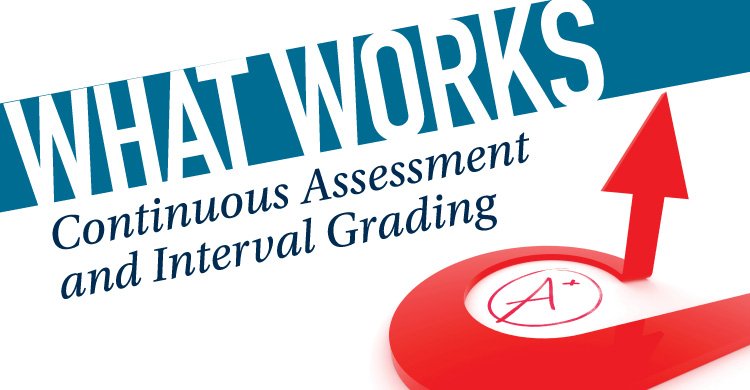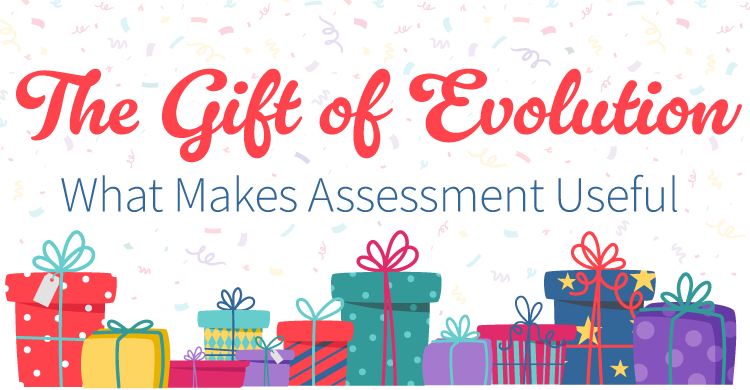In our recent publication, Beyond the Grade, our primary goal was to highlight practices proven to boost student achievement. As we began our study, we noticed assessment and grading topics being used interchangeably.
With refinement of our practices, we identified specific distinctions between the two processes. Here, we discuss the importance of assessment and grading, and traditional and current beliefs and practices of each. With this information, we describe a key difference between assessment and grading—with assessment as a continuous process and grading as an interval one. These distinctions are key to boosting student achievement.
Importance of assessment and grading to students
How we assess and grade students matters to students, to educational systems, and to society. Consider the potential importance of assessment and grading to how students view themselves and their futures. Upon receiving a grade, students might wonder: Who am I? What am I good and not so good at doing? How do my friends view me? Which classes will I be able to take? Can I get in the same class as my friend—which influences other students I will come to know? What colleges can I consider? What careers can I consider?
Internal questions and concerns resulting from student receipt of a grade can be endless, but, as educators who reflect on our practice, we also ponder: What if I am making decisions based on invalid assessments or grades? What if my grades are based on averaging of multiple factors unrelated to a student’s mastery of targeted content? What are the consequences for students of my assessment and grading practices? Over the years, what talents has the world missed because of flawed assessment and grading systems?
Traditional assessment and grading practices
During the past decade, traditional assessment and grading practices have been challenged. Traditional assessment practices have been questioned for their lack of balance (Stiggins, 2017). Stiggins argues that both summative and formative assessments are important elements of a balanced assessment system; however, we have emphasized summative, such as high-stakes testing and other paper-and-pencil tests, over formative assessment, such as assessment of performance tasks and informal learning checks. As a result, he continues to state that our educational system is undergoing an assessment crisis.
Traditional grading practices also have been challenged for distorting grades by including extraneous factors unrelated to mastery of specific content (Canady, 2017; Guskey, 2006). Product factors are related to evidence that students have demonstrated mastery of content goals within a designated time period. Process factors are important but extraneous to content goals, such as attendance, class participation, and lack of adherence to time deadlines, and other behavioral factors. Progress factors relate to learning improvement or change in performance from one point in time to another.
Assessment as a continuous process
We invite you to take a moment and think about assessment as a continuous process. As educators, we hear about assessment taking on a continuum of forms—such as formal versus informal, process versus product, norm-referenced versus criterion-referenced, and formative versus summative. There seems to be a range from one end of a continuum to another.
To illustrate, at the end of a unit or course, summative tools are useful for comparison of student performances or for teacher reflection on overall concept attainment in preparation for a future course; however, as educators, we know the necessity of using formative assessment to guide instruction throughout the teaching and learning process, to facilitate student learning each moment of each day. We also know assessments only guide instruction when appropriate monitoring tools are used—specific to established learning standards or targets. With a mindset of continuous reflection and improvement, the use of appropriate and quality assessments throughout the teaching and learning process is critical in significantly boosting student achievement.
Grading as an interval process
While multiple types of assessments are best used continuously to guide and to pace instruction, let’s now consider how grading is best viewed as an interval process. A grade represents the sum of various assessments for each student at a point in time, all pointing to a learning target, which represents mastery of selected content.
A grade is often expressed as a symbol, as a single letter or number. Although flawed to various degrees in their ability to measure student learning, in contrast to a system of continuous assessment, grades are most representative of student learning when issued at designated time intervals—hopefully after students have received the instruction and support they need, with time to practice until they have developed independence.
In our chapter on improving grading policies and practices, we include a section specifically related to overcoming the common but flawed practice of averaging process factors with product assessments, as discussed above. On pages 45–47 of our book, we include information on how to separate product, process, and progress criteria in order to develop a valid grading system.
Also unique to this book, we provide readers with sample master school schedules at elementary, middle, and high school levels that include time for student support during the school day. It is revolutionary to consider schedules that do not mandate all students in a school to follow the same bell schedule. Data-driven schedules operating within the same bell schedule format are both possible and desirable for providing support structures for learning before receiving a final grade.
Without systematic school support provided during school time, standards-based grading (SBG) is difficult, if not impossible, to implement successfully. The chapter on scheduling also includes organizational structures that reduce failing time for students and balanced workloads for teachers and students.
We also offer a convincing case for middle and high schools offering data-driven schedules based on student needs. Attending to quality assessments, progress monitoring, SBG grading, and data-driven scheduling are just a few of the practices these authors explain and refine related to boosting student achievement. By implementing grading as an interval process and other recommendations in this book, these problems can be overcome.
Making it work
Schools are beginning to report both product and process data separately and in different formats. Grades are valid and are reflective of student mastery—when students receive multiple guided practice opportunities, and when continuous and meaningful assessment feedback occurs, students are more likely to demonstrate independent mastery of a concept, skill, or performance task.
In Beyond the Grade, we offer several solutions for continuous assessment and interval grading in our SBG approach. Readers are provided with a graphic representation of a continuous instructional cycle that includes practices known to be critical to boosting student achievement: Teach, Assess, Analyze and Act.
As a continuous part of the cycle, assessment is shown as continually toggling between assessing and analyzing student performance. Students receive a grade at interval points in time, but the grade is the result of teaching, assessing, and supportive actions that occur on a continual basis, all aimed at the goal of boosting student achievement.
References:
Canady, R. L., C. E. Canady & Anne Meek. (2017). Beyond the Grade: Refining practices that boost student achievement. Bloomington, IN: Solution Tree Press.
Guskey, T.R. (2006). Making high school grades meaningful. Phi Delta Kappan, 87(9), 670–675.
Stiggins, R. (2017). The Perfect Assessment System. ASCD. http://www.ascd.org/ASCD/pdf/siteASCD/publications/books/PerfectAssessmentSystem_Stiggins.pdf
[author_bio id=”1447″]
[author_bio id=”898″]
Beyond the Grade is available for purchase on Amazon or SolutionTree.com.






